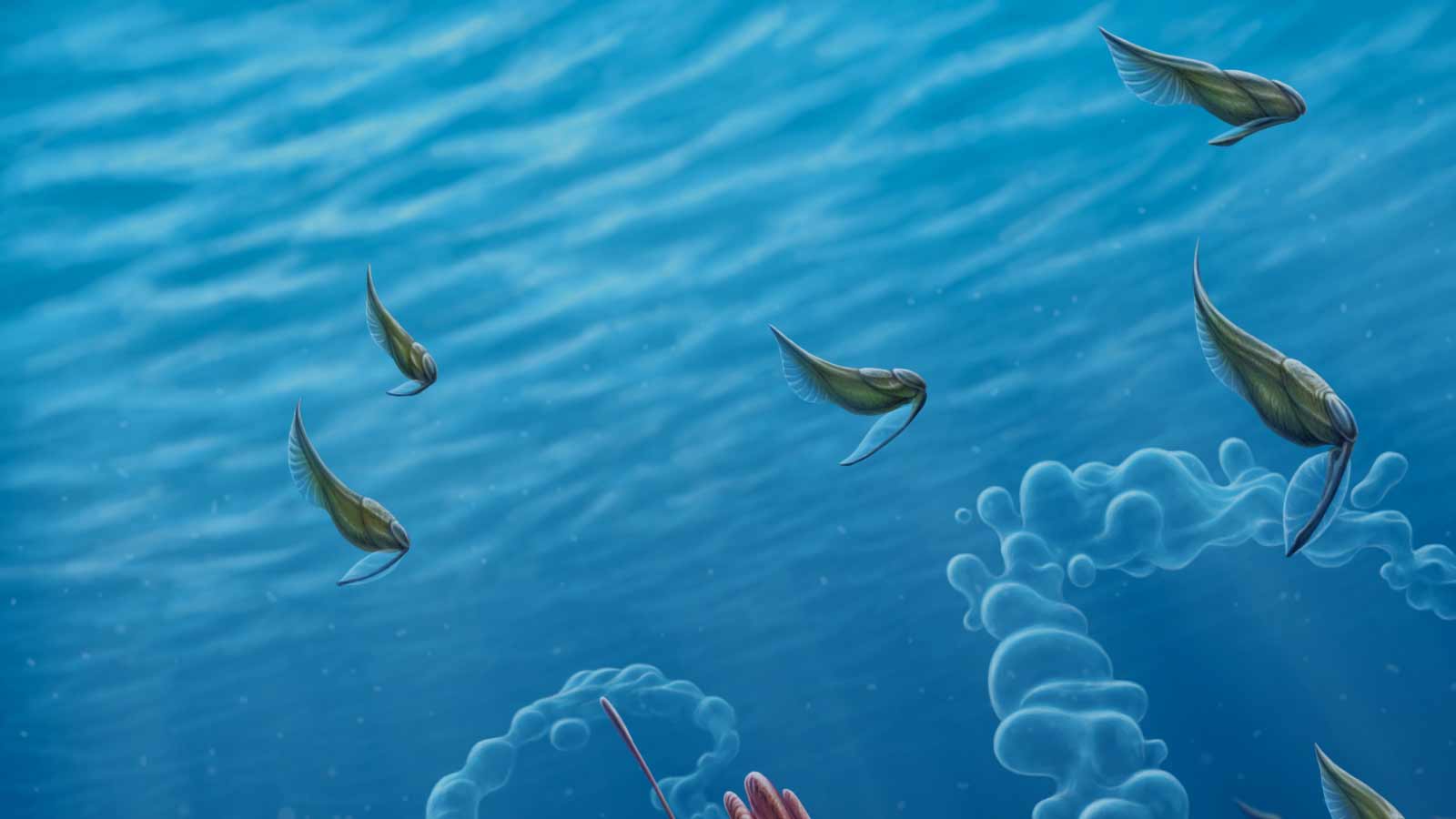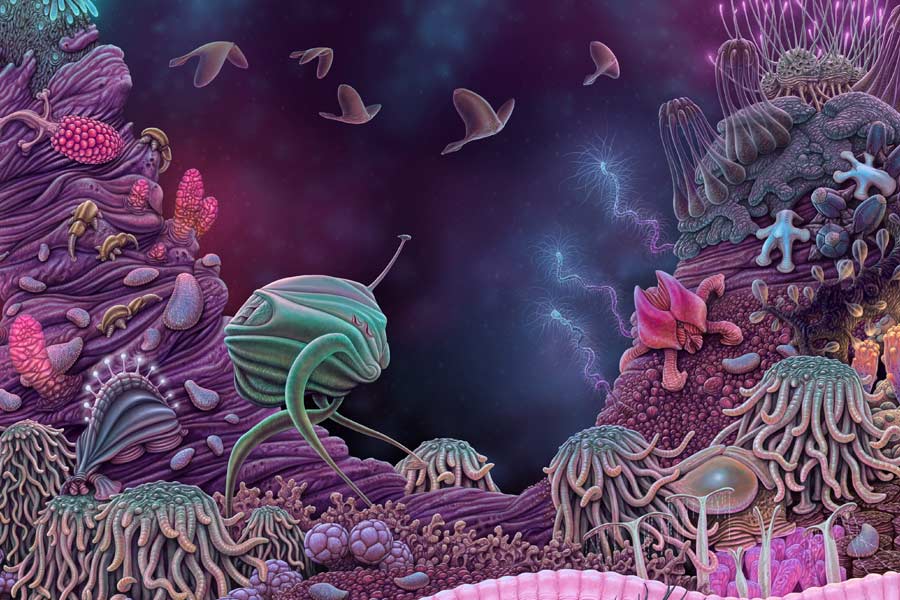Open Ocean
The great aquatic desert.
The planet's largest biome
Oceans cover about 55% of the surface area on Veteris. Away from the coasts, life is more sparse and and organisms are separated over great distances. However during certain events, creatures briefly congregate in great numbers before dispersing out again across the great blue expanse.
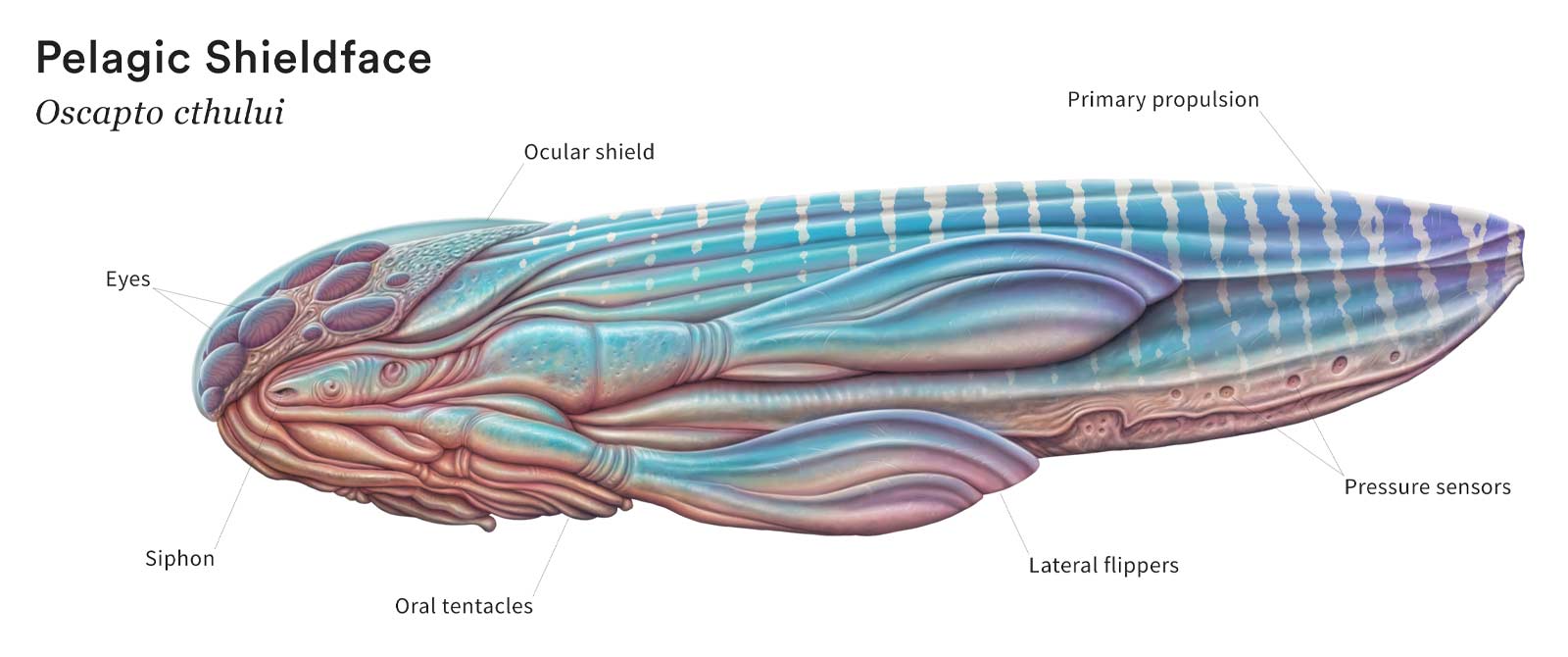
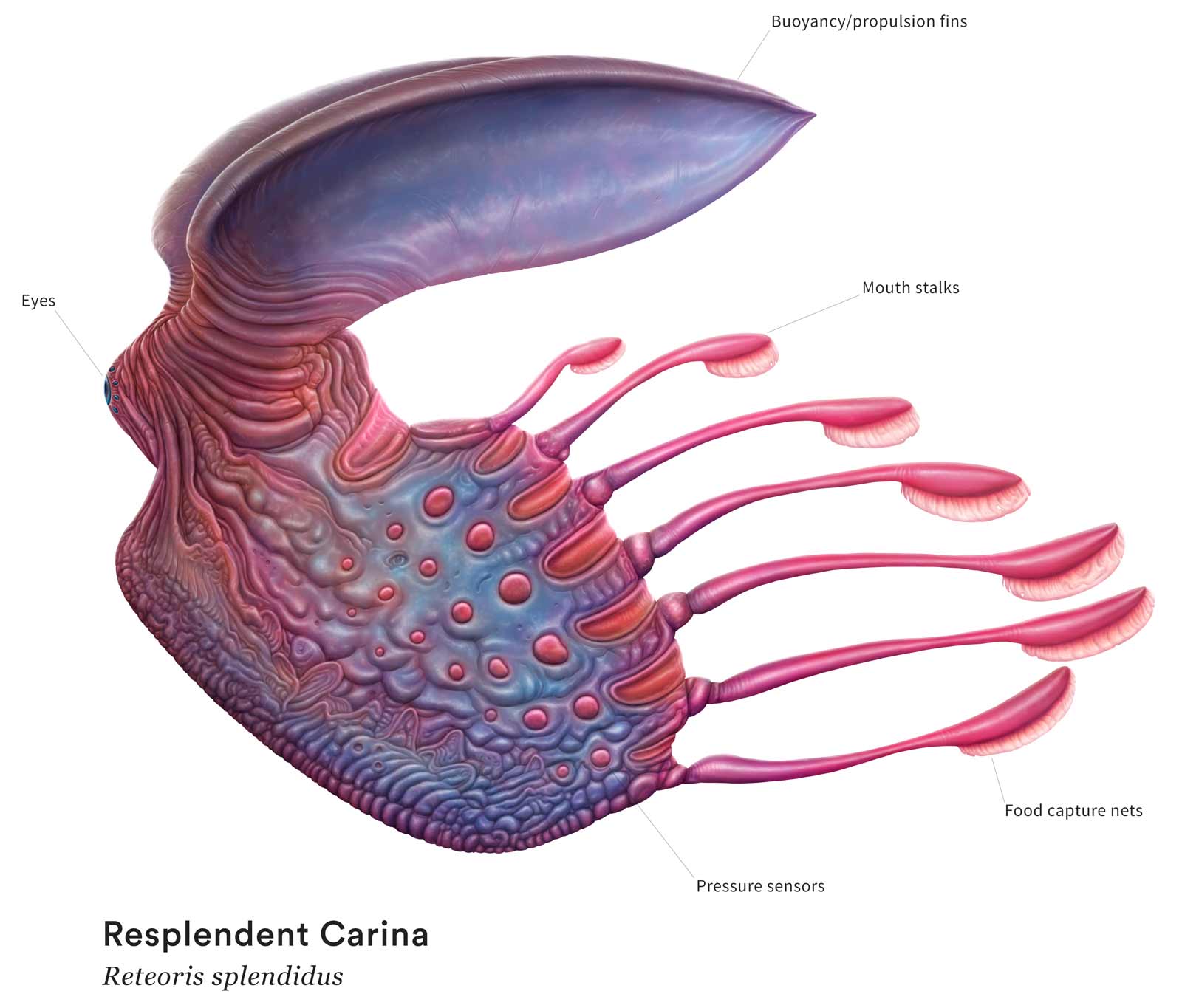
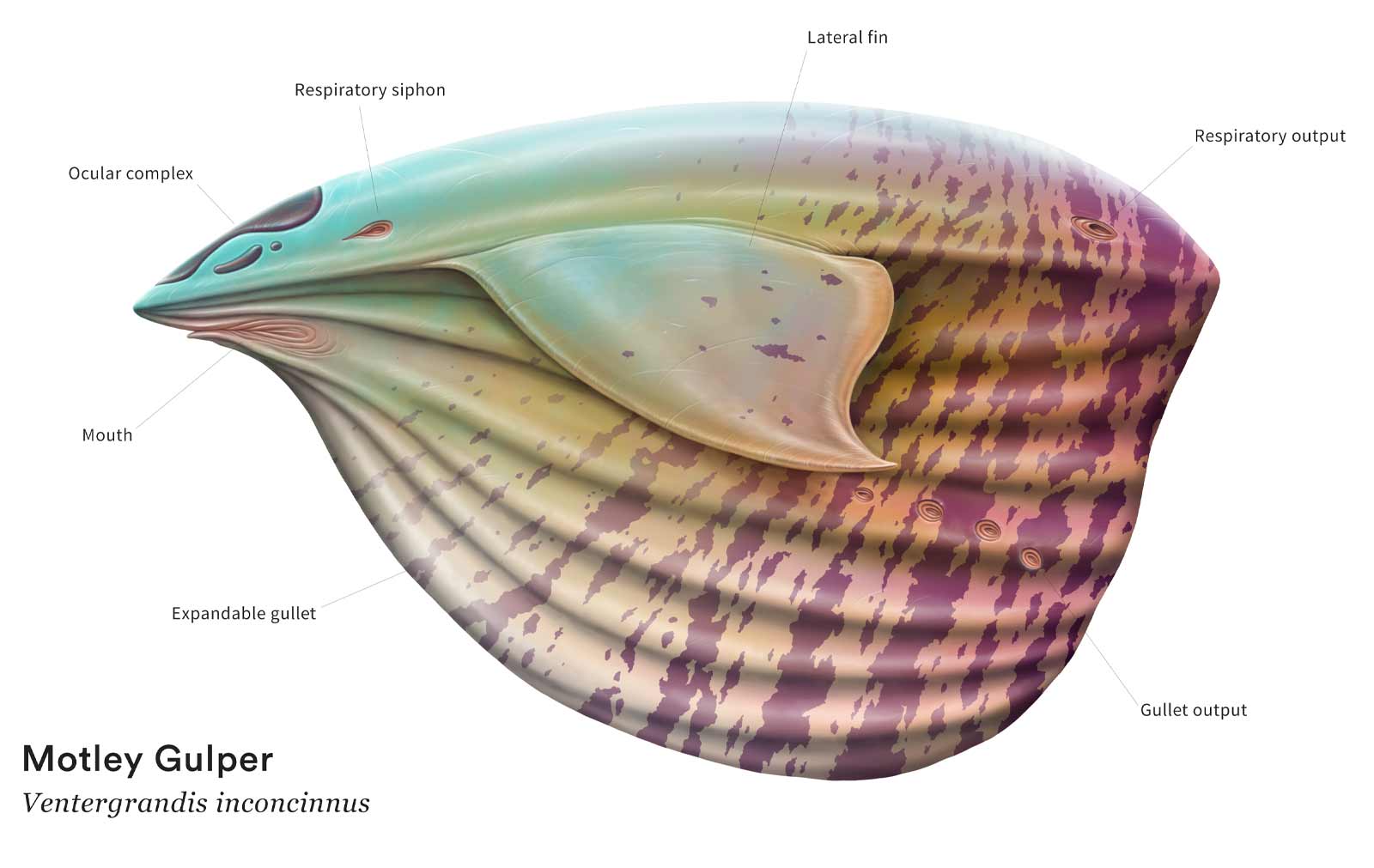
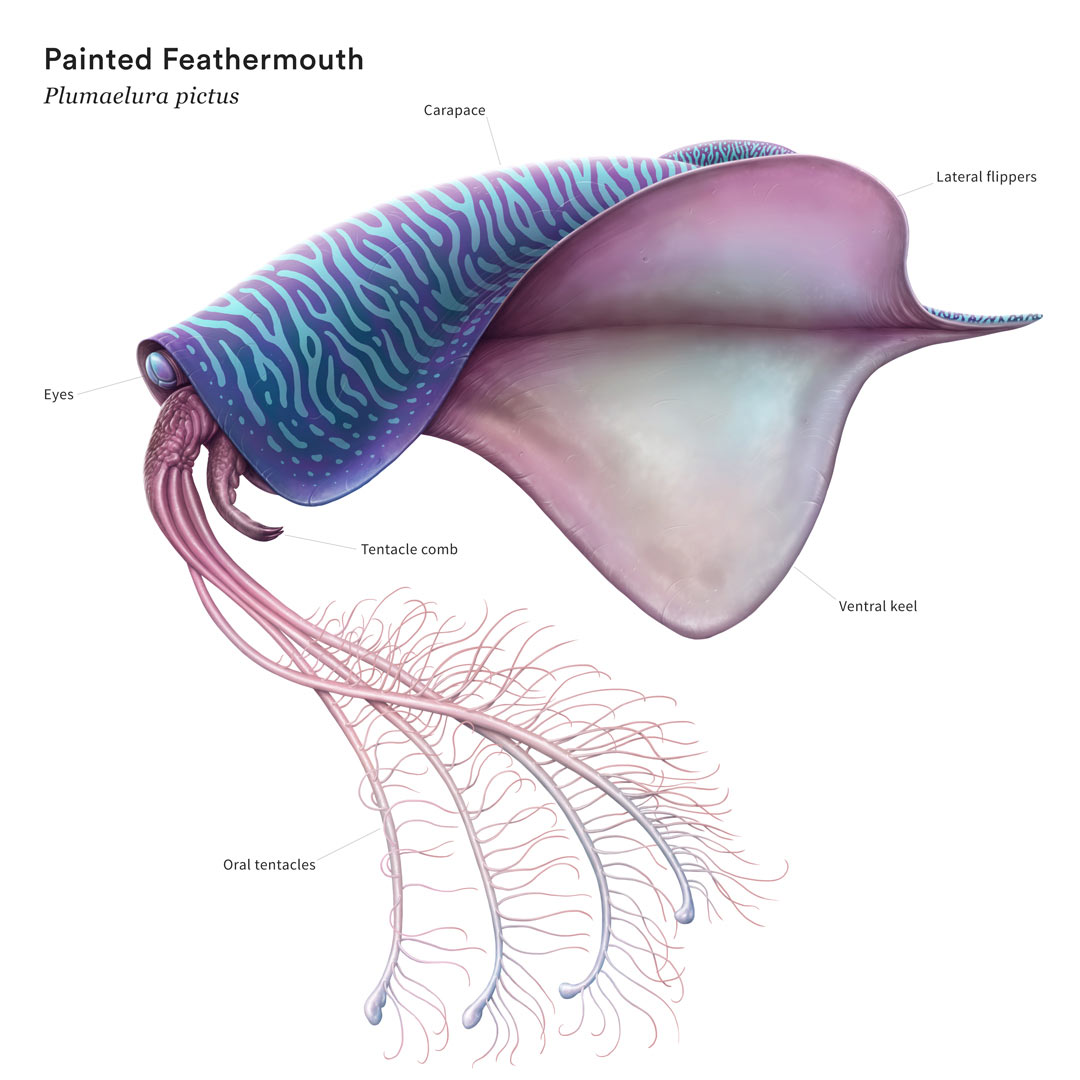
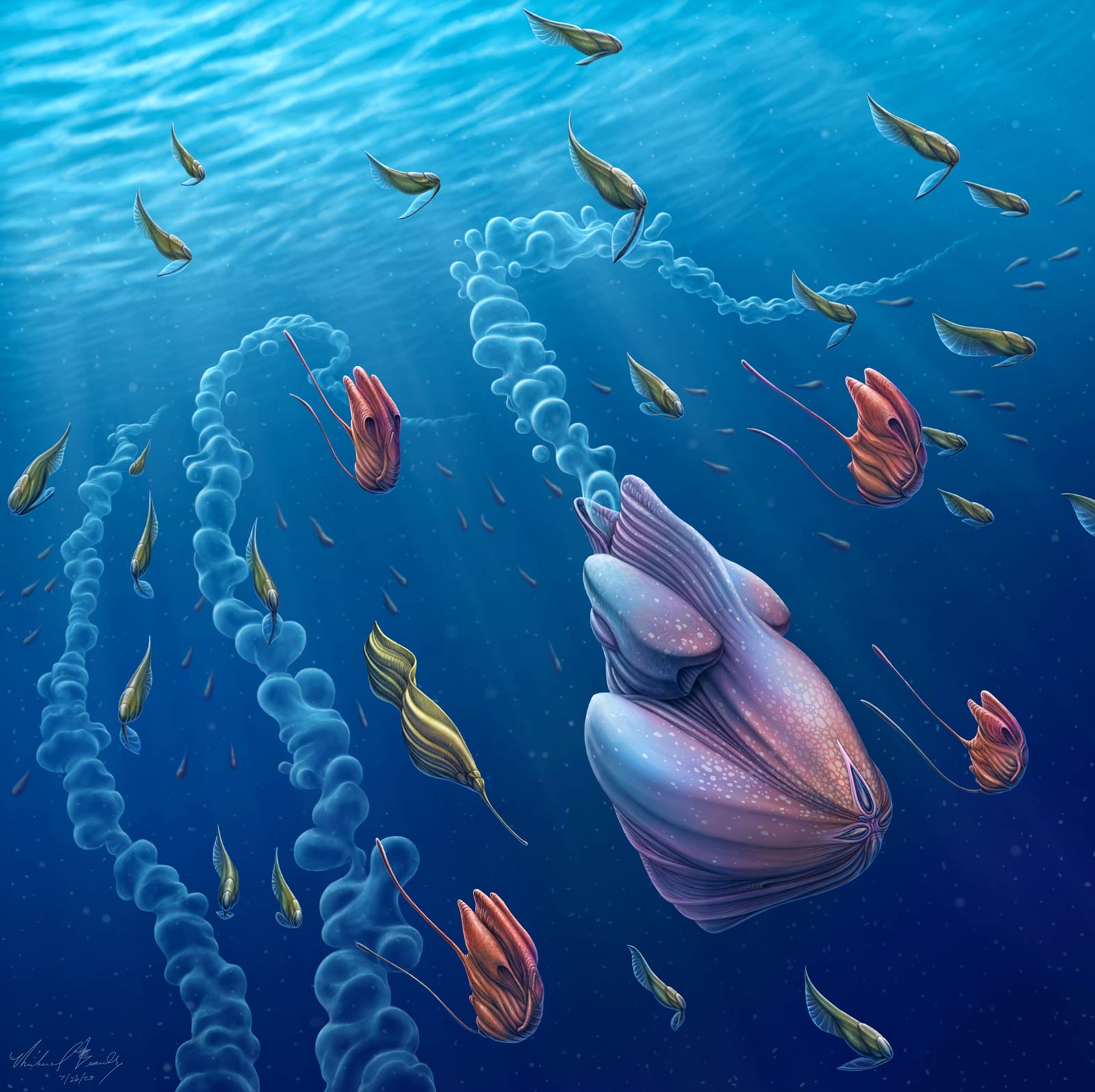
Back to the Depths
2020, digital
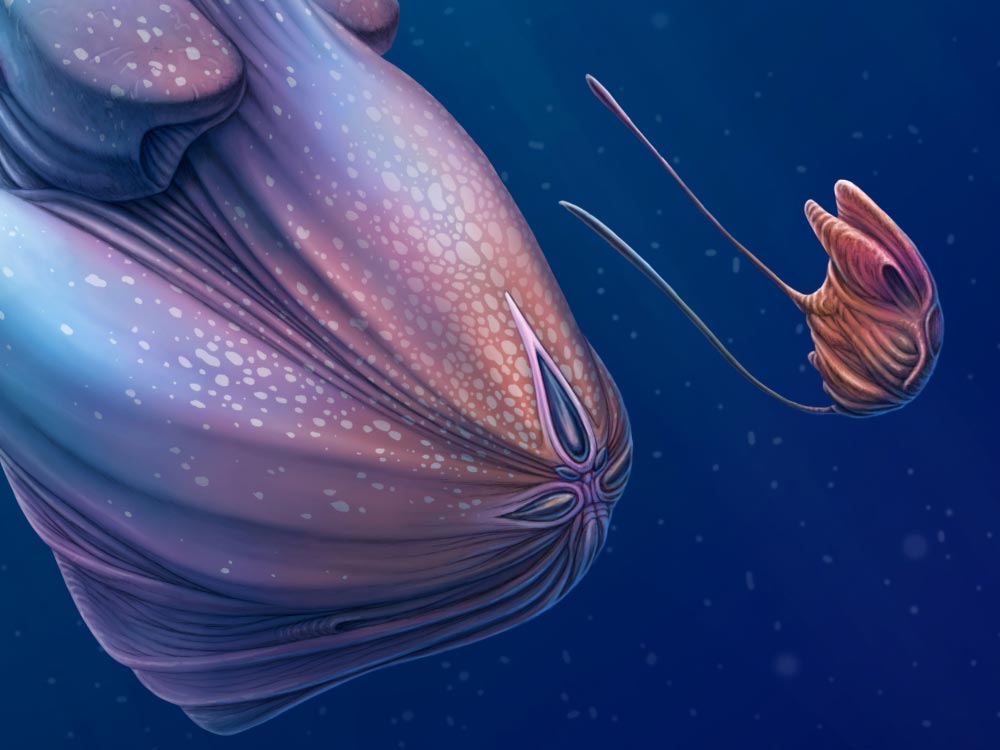
A frenzy of life
An entourage of opportunistic creatures accompanies the deep-sea behemoths during their brief ascent to the surface. Releasing their gelatinous strings of embryos here in the sunlight has a significant benefit - there's far more visibility. The swarm of followers are here in search of a quick meal in the form of the gelatin, which is full of valuable proteins and nutrients. After the feast however, the recipients of this apparent windfall become unwitting hosts for the behemoth's multitudinous offspring, which were embedded in the sticky gel.
Adapted to develop inside a wide variety of pelagic creatures, the young grow internally - and sometimes even on the surface of - their hosts until such time as they detach and sink back into the darkness. For most host species, this seems to be a mutually-beneficial symbiosis. At the beginning they receive a large and valuable meal, and usually incur very little detriment from their temporary parasites. The young behemoths will hide in the dark depths for many years until attaining the size necessary to return to the light and repeat the ancient cycle again.
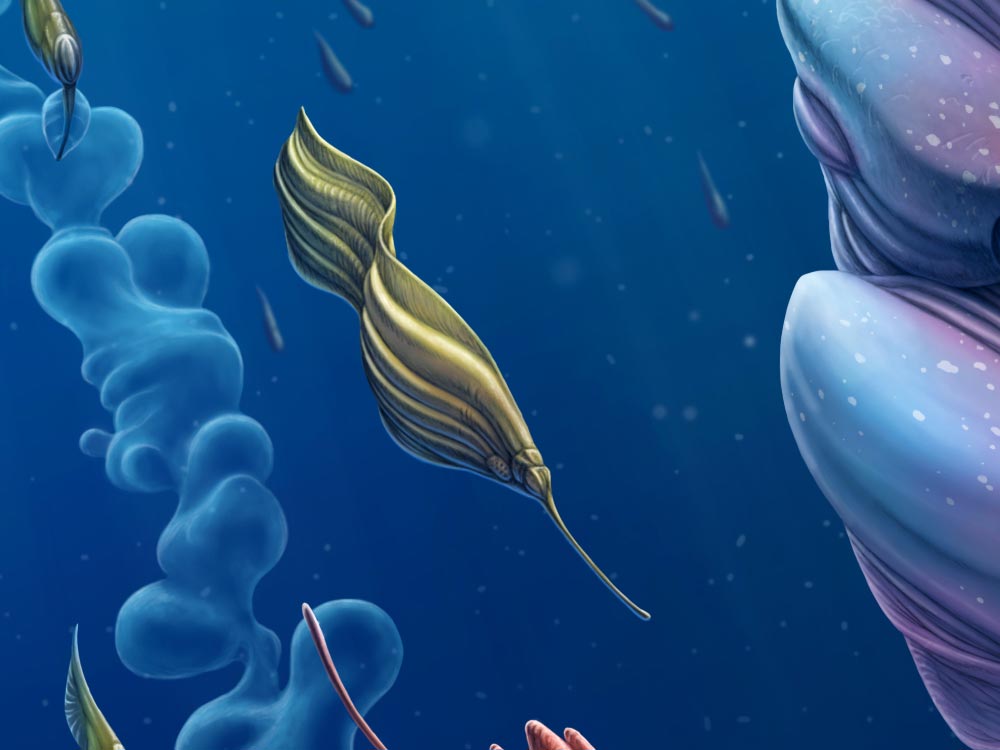

Spiked Floater
2011, digital
The patient hunter
Expending as little energy as possible, the spiked floater uses its barbed forward attack spike to skewer its prey. Spiralled anterior graspers unfurl and draw the captured victim to its mouth. Floating listlessly in the water column, the floater's tough waxy skin resists puncture, and rear-facing defensive spines prevent ambush from behind. It propels itself with several water jets, and can move effortlessly in any direction. The feathered, frond-like appendages on its front are in fact external parasites that attach themselves to its skin so as to be within reach of the floater's mouth. When the floater feeds, these parasites bend their flexible bodies toward the captured prey and use the feathered apparatus to glean scraps and pieces of the dismembered foodstuff. Several species of spiked floater inhabit the oceans of Veteris, ranging in size from a minuscule 10 cm to 5 meters in length. This particular species is about average - maxing out at around 2 meters.
